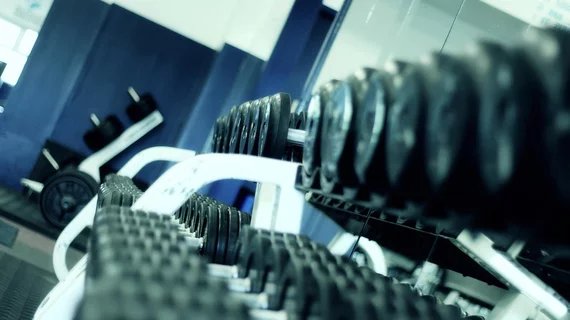Radiologists aren’t exercising regularly, with nearly 90% suffering shoulder, neck pain at work
Radiologists spend the majority of their time sitting at a workstation, and new research suggests those who don’t exercise regularly are more prone to suffer from a number of musculoskeletal injuries.
Those findings come after surveying nearly 200 rads from academic, public and private hospitals across a handful of large cities in the Eastern Province of Saudi Arabia. A whopping 88.9% claimed to have musculoskeletal symptoms within a year of the study and nearly 60% of those who exercised less than once a month said they experienced “disabling” neck pain, with a similar pattern seen in regard to shoulder pain.
Co-author Mohammed Al Gadeeb, with Bin Faisal University’s Department of Radiology, and colleagues noted physical inactivity among radiologists has grown even more worrisome alongside technology’s advancement.
“Our study demonstrated that a high proportion of radiologists did not engage in regular physical activity and did not exercise even once a week,” the authors added. “This is aggravated by the fact that the practice of clinical radiology has become more sedentary in the PACS era, potentially leading to negative effects on the general health of radiologists.”
To reach their conclusions, Gadeeb et al. sent an online survey asking about demographic characteristics along with how often and what type of exercises radiologists performed. Conducted in April 2019, work-related musculoskeletal discomfort was evaluated according to the Nordic Musculoskeletal Questionnaire.
A total of 198 radiologists (111 men and 87 women) responded, with most (71.2%) less than 40 years old.
The largest proportion of respondents did at least one type of physical exercise each day at 37.9%, followed by once a week (27.8%) and no regular training at all (22.7%). More men completed weekly workouts compared to women (74.8% vs. 51.7%), the authors reported. Walking was the most popular activity, with stretching and running the next closest.
In addition to the overwhelming 88.9% claiming to have musculoskeletal symptoms, nearly 30% said such pain kept them from completing any type of workout. These symptoms correlated with exercise frequency, as 45.8% and 32.8% of monthly and weekly trainers reported disabling neck pain, respectively. This was also the case for shoulder discomfort, the group noted.
In light of their findings, Gadeeb and colleagues highlighted the need to incorporate regular workouts into both off-hours and on-the-clock time. They pointed to one study revealing how a treadmill workstation shortened interpretation times without affecting pulmonary nodule detection on CT scans. Standing radiology desks should also be considered, they added.
“Given the magnitude of physical inactivity among radiologists, the use of such workstations should be promoted which may mitigate the health risks associated with sedentary work,” the authors concluded.
Read the entire study published Aug. 11 in the Archives of Public Health.

